Prawn Saganaki Recipe – A Simple, Healthy Mediterranean Dish
Gyros, Greek salad, and Moussaka are probably the most famous Greek dishes and they are rightfully very popular. But on my last trip to Greece, I fell in love with another Greek dish: Prawn Saganaki. It doesn’t get more Greek than that.
Fresh Shrimp, ripe tomatoes, a hint of Ouzo, and Feta cheese sound like an unusual combination of ingredients. I was especially skeptical about the cheese & seafood combination. But it works. It not only works, but it is delicious.
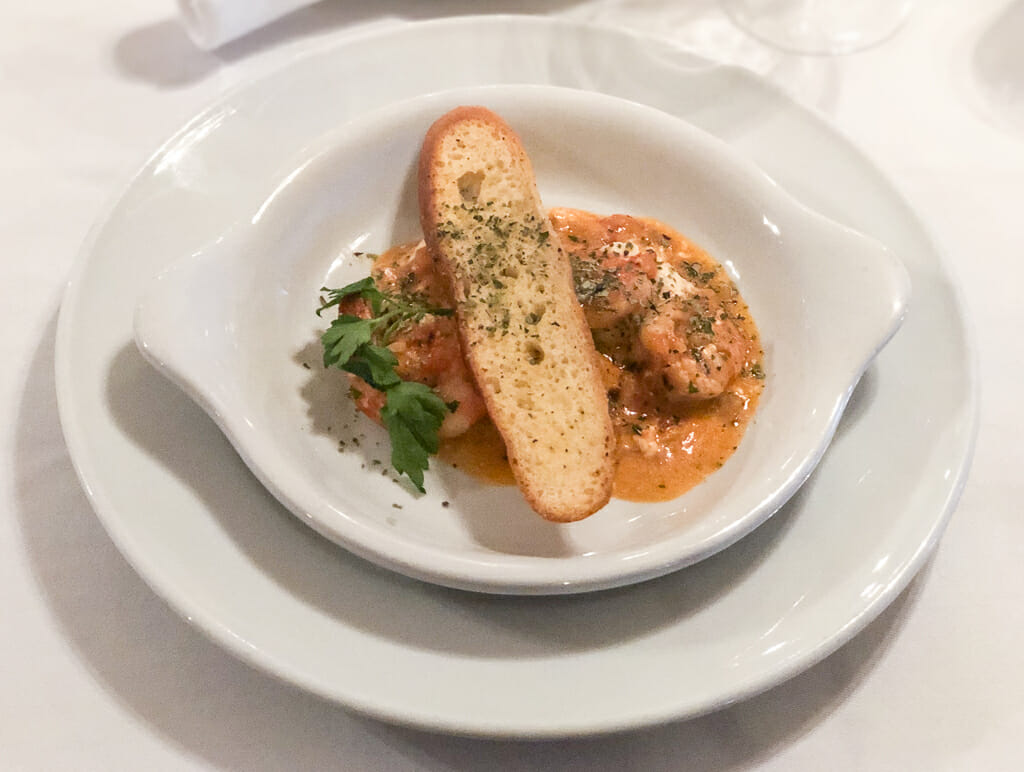
On our recent cruise press trip, which started in Athens and took us through the Eastern Mediterranean with Celestyal Cruises, the other journalists and I were surprised with a behind the scenes cooking demonstration.
The Head Chef of the Celestyal Crystal showed us how to make Prawn Saganaki and shared his recipe with us. The recipe below is based on his recipe, but adapted for 4-6 appetizer portions.
I have only been back from Greece 6 weeks and have made this dish 4 times already. And I hope, you will too, because it is soo delicious and super easy to make.
History of Saganaki
Before we dive into the shrimp saganaki recipe, I want to dive into the history and etymology of the word Saganaki. To be honest, Saganaki does not sound Greek to me and a few years ago (before I was enlightened and I had tried Saganaki for the first time) I probably would have guessed it was Japanese.
Saganaki actually comes from a Turkish word Sahan, which means copper pot. So Saganaki actually referred to the cooking vessel, not the style of cooking. Still, in many restaurants, you will be served your prawn saganaki in a little pan, which makes for a very cute presentation.
Versions of Saganaki
As already mentioned, Saganaki refers to the pot it is made in, rather than a specific recipe style. Here are some of the most common Saganaki dishes you will find in Greece.
Saganaki (Cheese)
Saganaki made with cheese is probably the most widely known Saganaki variety in Greece and abroad. A thick slab of white cheese, often Feta, Graviera, or even Halloumi is breaded and fried, then flambéed table side with a shot of Ouzo and the flames smothered with a hearty squeeze of lemon juice.
Saganaki is often served as an appetizer of small meal. While the portion is usually not that big, it is quite filling because of the high fat content. I personally like to cut the heavy dish with a side salad with a light, lemony vinaigrette and lots of baguette.
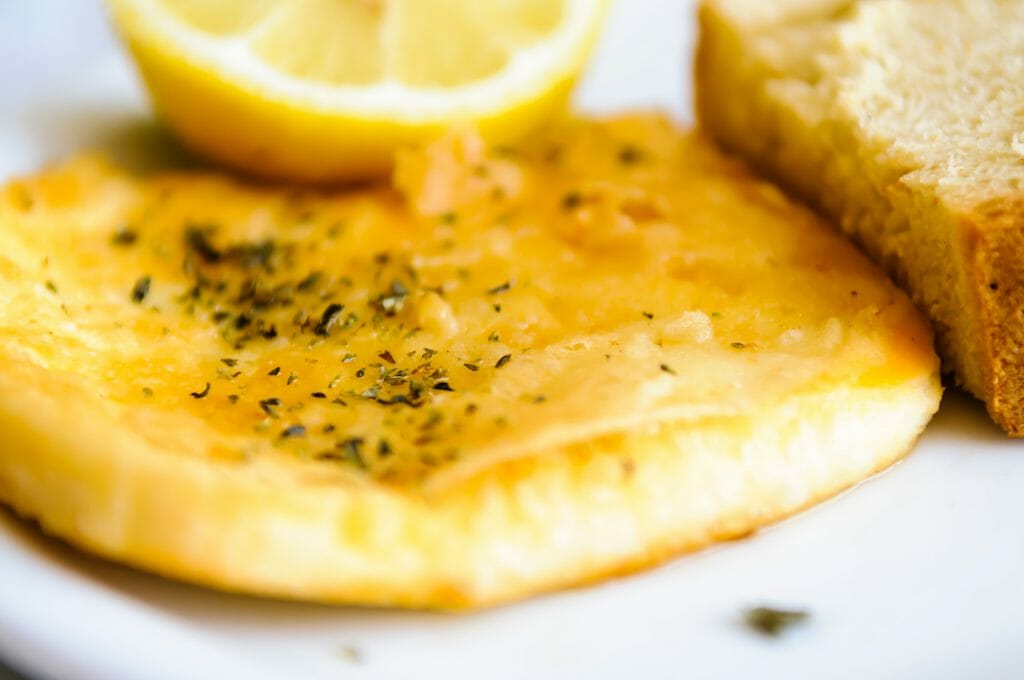
Prawn/Shrimp Saganaki
Prawn Saganaki, or often called Shrimp Saganaki, is the second most common Saganaki dish. Fresh prawns are smothered in a chunky tomato sauce with Feta cheese crumbles.
This Saganaki version is often served as an appetizer with baguette or as a main dish with pasta or rice. Read more about my favorite Prawn Saganaki recipe below.
Seafood Saganaki
Fresh seafood is one of the staples of Greek food. Not really a surprise for a country that consists of over 6000 islands. So if you want to switch things up and try something new, how about Seafood Saganaki with mussels, clams, calamari, scallops or a mix of all?
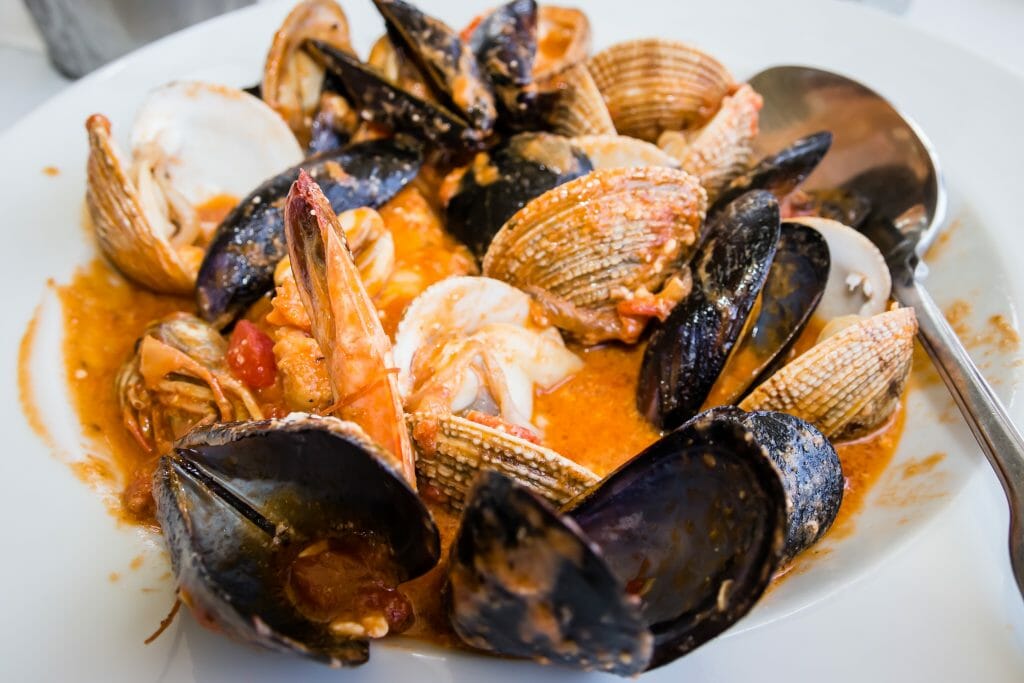
Chicken Saganaki
If you don’t like seafood or are allergic to shellfish, Chicken saganaki is another option. The preparation is almost the same, but cooking time varies depending on how big your chicken cubes are or if you are using larger chicken pieces.
If you use chicken breasts or chicken thighs, you can also put it with the sauce into the oven for 50-55 minutes at 350F (make sure to check that the juices run clear and the chicken is completely done.
Mushroom Saganaki
If you are vegetarian, or want to add this to your Meatless Monday rotation, you can also substitute the shrimp, seafood, or chicken with mushrooms. I like to use simple button mushrooms, or baby portabellas, but you can use whatever you have on hand. Again, cooking time might vary, depending on your mushrooms.
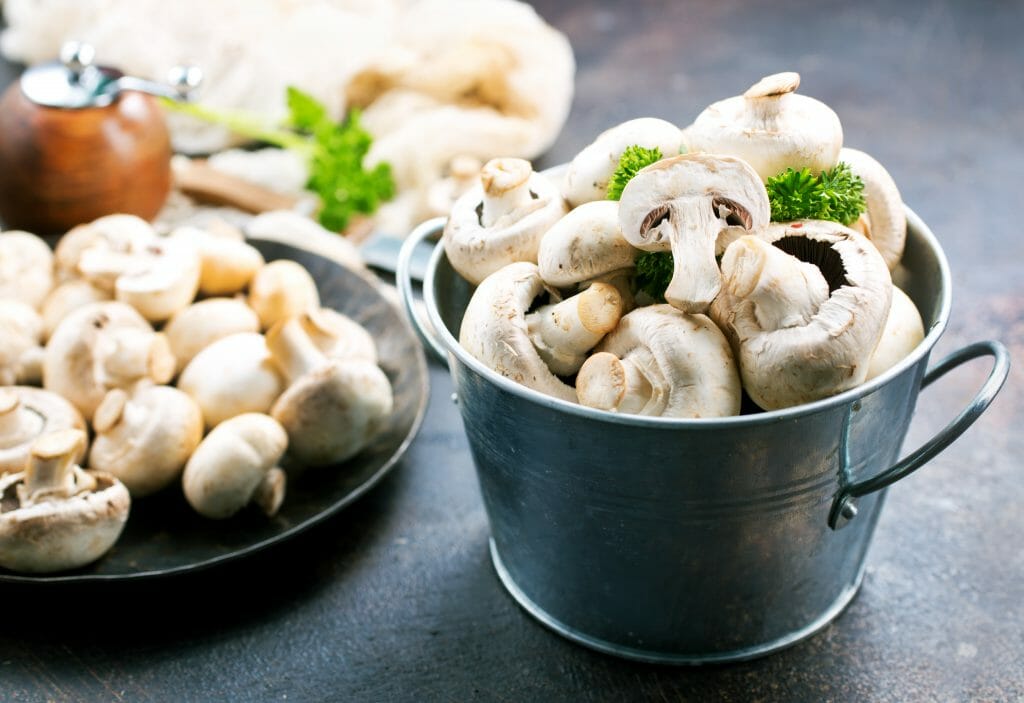
Whatever You Like Saganaki
As you might have guessed it, you can substitute a lot of ingredients for the prawns in prawn saganaki. While I have not tried it yet myself, there are quite a few ingredients that would work well with this recipe. Cauliflower for example, or tofu maybe? It is a pretty versatile recipe, so feel free to play around with it.
Cooking Class
As I already mentioned, on our Eastern Mediterranean Cruise, which started and ended in Athens and took us to 3 continents, we got a cooking presentation by the ship’s head chef.
The chef, a local Greek chef, who grew up in the Peloponnese, showed us his magic. On two tables, set up in the main dining room, he shared his Prawn Saganaki recipe with us.
Watch the video of our Prawn Saganaki cooking demonstration here:
Prawn Saganaki Recipe
Ingredients for Prawn Saganaki Recipe
These portions are for a small appetizer dish for 4-6 people.
- 1 lbs jumbo shrimp (21-25 count)
- 1 small onion finely diced
- 1 large tomato, peeled and finely diced
- 1 cup of tomato sauce (homemade is best)
- 3 large cloves of garlic, minced
- Oregano, fresh or dried, to taste
- Salt and Pepper to taste
- Fresh Thyme, to taste
- 2 tbsp Olive Oi
- 2 oz of Ouzo
- 6-8 oz of Greek Feta cheese, rinsed and crumbled
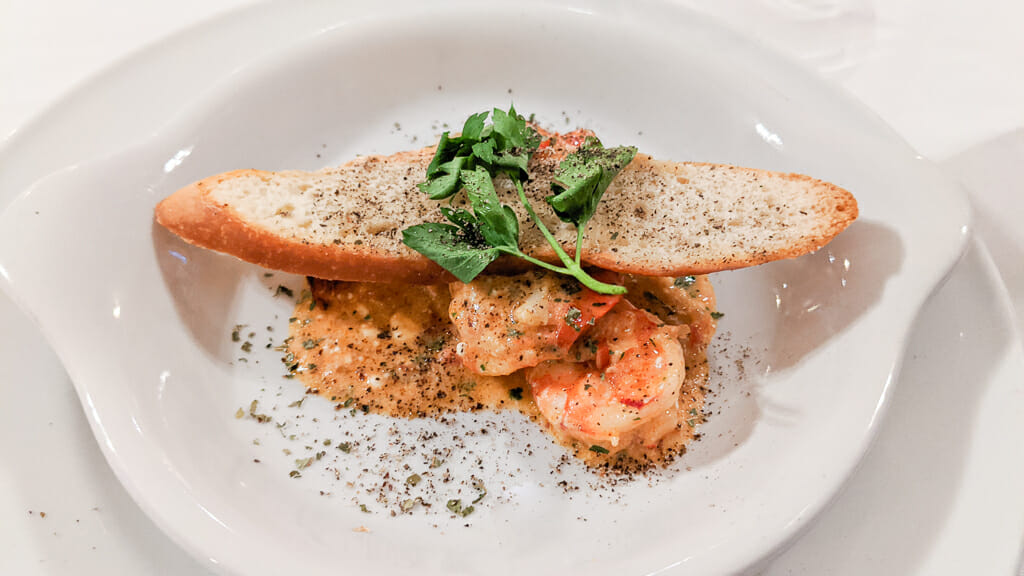
Instructions for Shrimp Saganaki
Heat up the olive oil in a large sauté pan over medium heat.
Add the chopped onion, stir to coat with oil and add a sprinkle of salt. Stir occasionally until onions are translucent approximately 1-2 minutes.
Add the garlic and stir for 1-2 minutes.
Pat down the shrimp with a paper towel, so they are dry, then add them to the pan and stir. Let it cook for 3-5 minutes, stirring occasionally.
Add the Ouzo and flambée the shrimp. Remember to turn off your fan, or you might set your house on fire.
Add the chopped tomatoes and stir, add some salt and let it cook down for a 1-2 minutes, then add the tomato sauce, fresh thyme and let it cook for another 1-2 minutes.
Finally, crumble the feta cheese on top, as well as some oregano. Stir and let the cheese melt a little bit into the sauce (about 1-2 minutes) and you are ready to serve.
Serve with some rustic baguette, dried oregano, freshly ground pepper and parsley. Enjoy!
Shrimp Saganaki is for me the ultimate Greek dish. You get delicious seafood, salty feta cheese, juicy tomatoes and the floral aroma of ouzo. It is simple, fast, and takes me back to Greece. What is your favorite Greek dish?
A big thank you again for the team from Celestyal who invited us on this winter cruise around the Eastern Mediterranean and made this trip possible. Thank you Chuck, Marios, and Frosso for taking such great care of us.
To book this cruise, just go to the Celestyal Cruise website and read more details about sailing dates, cabins and of course to go through the booking process.
Shrimp/Prawn Saganaki – Pin for later:
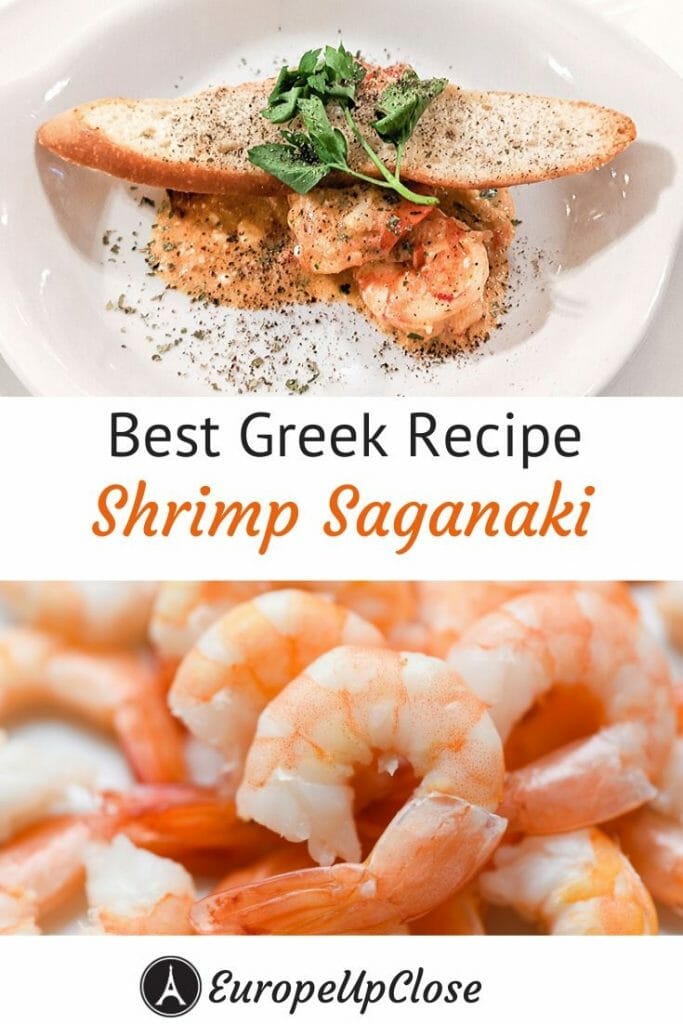


Peggy
Wednesday 5th of February 2020
Hi, Maria! Hope you and Greg are well. Thanks for the info about the origin of saganaki. I also wondered about that. You left tomato sauce out of your list of ingredients. Happy trails! Peggy
Maria Haase
Wednesday 5th of February 2020
Hi Peggy,
Greg and I are doing great, how about you? Thanks for the heads up on the tomato sauce, I added it! Happy Travels to you as well!